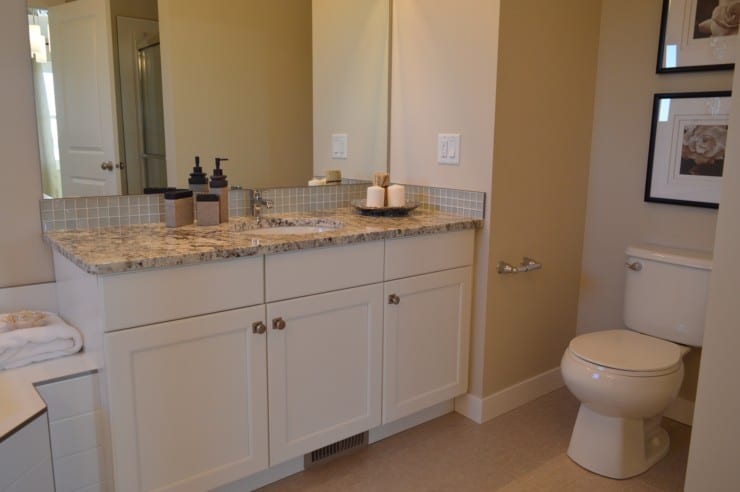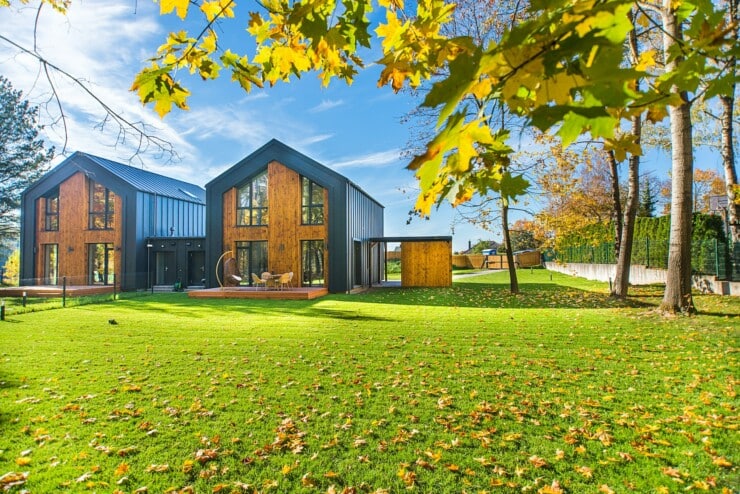Can You Use Rust-Oleum Paint on Wood? (Will It Work?)
Rust-oleum enamel paint creates a durable and glossy coating when it dries, making it ideal for use on metals. It effectively prevents rust on metal surfaces.
But can rust-oleum paint be used on wood surfaces?
Yes, you can use rust-oleum paint on wood. Other surfaces that Rust-Oleum can be used on include concrete, ceramic, vinyl, porcelain tiles, and laminate.
To apply Rust-Oleum, clean off the dirt on the raw wood. Apply Rustoleum oil-based primer before coating with a Rustoleum paint (oil-based).
Read on to learn how to use rust-oleum on wood surfaces and achieve the best results.
Can You Use Rust-Oleum Paint on Wood?

Even though rust-oleum is primarily designed for metals, you can still paint wood. But, you’d have first to prepare the wood surface properly.
For the best results, you’ll need to use oil-based rust-oleum paint.
Use sandpaper on the wood, and wipe away the sand dust with a damp lint-free rag or tack cloth. Once you’ve confirmed the surface is dry, apply an oil-based primer, preferably from Rust-oleum.
You don’t need to prime when weatherproofing and painting metal surfaces, but it’s critical when painting wood. The metal primer aids the paint to adhere correctly to the wood surface.
Therefore, the primer and paint create a protective, durable coat.
Painting Rust-Oleum on Wood: What Do You Need?
When getting ready to paint wood with rust-oleum, you’ll first need to decide whether to go for a spray can or brush-on paint option.
Hence, do your research on the individual product properties by Rust-oleum to determine the product that appeals to you the most.
Ideally, Rust-oleum products perform an excellent job, provided you adhere to the correct procedure.
What You Need
- Tarp
- Tack cloth
- Rust-oleum metal paint
- Roller or paintbrush
- Protective clothes
- Painter’s tape
- Mineral spirits
- Hand gloves
How Do You Apply Rust-Oleum to Wood?
For rust-oleum to work correctly, it requires proper surface preparation. As we already mentioned, it’s critical to sand down the wood’s surface, followed by an oil-based primer, before you apply the paint.
Let’s take a look at the step-by-step procedure.
Prepare the Workspace
Lay a plastic sheet or drop cloth to cover the floor around your workspace to prevent the paint spills from messing up your floor.
Another essential ritual when painting is to mask the areas you don’t intend for the paint to reach or edges.
Therefore, a painter’s tape comes in handy for this task. The outcome looks clean and professional.
How do you protect yourself?
Wear long-sleeved, protective clothing that you find comfortable and don’t mind getting the paint. In addition, protect your hands from staining using hand gloves.
And if you have a problem with the paint’s smell, you can wear a respirator.
Sand Down the Wood
Using medium-grit sandpaper, sand down the wood surface to a smooth and clean finish. Often, 180-220 grit gives the best results. Scuff the wood in the wood grain’s direction.
When using a damp rug, thoroughly wring it to get rid of the excess water. Wetting the wood raises the grain undesirably.
Once you’ve cleaned the sanded wood, let it dry before applying the primer.
Apply the Primer
Apply the oil-based primer to create a durable and protective coat and ensure the rust-oleum paint sticks.
Therefore, the acrylic latex bonding primer does an excellent job and is recommended.
When you’re done priming, allow the wood to dry completely. Usually, it takes a minimum of three hours if there’s good weather.
Prepare the Rust-oleum Paint
Open the paint can and stir the paint thoroughly to mix it into a uniform product. Stirring it redistributes the colorant throughout the paint, creating a homogenous product.
Otherwise, chances are you’ll end up with uneven patches on your project.
Apply the Rust-oleum on the Wood
Once you’re done stirring the paint, apply it on the primed wood using a roller or a paintbrush.
If you opt for spray painting instead, ensure you spray an even coat on the wood. Shake the can thoroughly before you begin spraying.
When done, allow the wood to dry for a minimum of two hours or as recommended.
Re-apply Multiple Coats of Rust-oleum Paint
Give the first coat as much time as possible to dry. It might take up to a day.
Once completely dry, examine the wood and determine if there’s a need for more coats for adequate coverage.
Allow each coat to dry completely before adding a successive coat. In any case, you’re free to apply as many coats to achieve the desired finish.
Also, you need to consider scuff-sanding between coats with fine-grit sandpaper. It’ll add more grip to the paint. Allow each coat to dry before using the sandpaper.
Is the Rust-oleum Spray Paint Good for Wood?

The rust-oleum spray paint is an excellent alternative to the standard rust-oleum latex or metal paint. It creates a flawless finish on any wood or wooden material.
Plus, it’s easier to achieve better coverage with spray paint than when using rollers or brushes.
Can You Apply Rust-Oleum on Stained Wood?
As long as you perform proper wood preparation, you can use the paint on stained wood. Therefore, sand and prime the wood for a great outcome.
An oil-based primer or shellac should do a great job.
Benefits of Rust-oleum Paint on Wood
There are added advantages to using rust-oleum on your wood apart from protecting it:
- Painting wood using rust-oleum gives it an instant facelift. The dried paint adds a brightened look with metallic tones such as copper, gold, bronze, and silver.
- The paint does an excellent job of hiding surface defects and inconsistencies. Hence, it’s a great way to breathe life into an unappealing piece of wood.
FAQs
What Surfaces Can You Use Rust-Oleum On?
You can use Rust-oleum on previously-coated, sealed, stained, or bare surfaces.
These surfaces include linoleum, vinyl, laminate, concrete, hardwood, porcelain tile, and ceramic. It’s not suitable for garage floors or exterior spaces.
Can You Use Rust-Oleum Paint for Wood?
Rust-oleum paint is appropriate on wood, unglazed ceramic surfaces, plastic, plaster, metal, and wicker.
Does Rust-Oleum Waterproof Wood?
Yes, rust-oleum paint creates a hard surface on the wood that doesn’t allow water to penetrate the wood. Thus, the wood lasts longer.
Do I Need to Prime With Rust-Oleum?
We recommend priming for wood containing high levels of tannins such as fir, mahogany, redwood, and cedar.
Priming these surfaces prevents tannin bleed and covers surface defects.
Final Thoughts
Rust-oleum provides incredible results when used correctly on wood. Therefore, begin by choosing the right product – in this case, an oil-based primer to prep the wood before painting.
We hope that this information helps you achieve your desired results in your next rust-oleum painting project.







